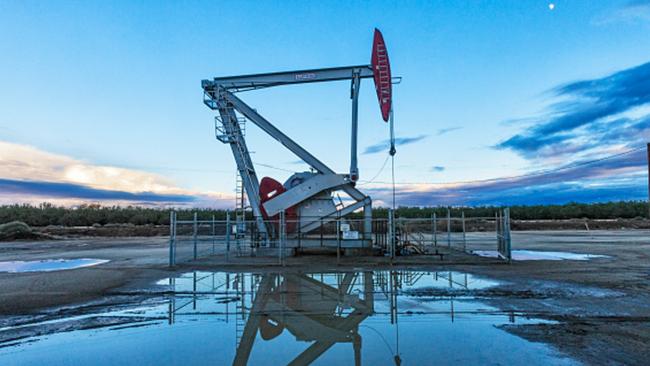US oil prices back in a bull market
The global oil benchmark has hit a two-year high, as investors expect OPEC to successfully shrink a global supply glut.

US oil prices returned to bull-market territory while the global benchmark hit a two-year high, as investors gained faith that OPEC will successfully shrink a global supply glut.
A drumbeat of bullish data in September, including the International Energy Agency’s upward revision to its demand outlook, has lifted prices. Investors have become more confident that the Organization of the Petroleum Exporting Countries will continue cutting production and that its efforts are helping bring oil’s supply and demand into balance.
“It looks as though the market started to get convinced that the rebalancing is actually happening,” Tamas Varga, an analyst at PVM Oil Associates Ltd. said in a note.
US crude futures settled overnight nearly 23 per cent above this year’s low of $US42.53 a barrel on June 21, marking the sixth bull market for crude in four years and the first since February. A bull market is typically defined as a gain of 20 per cent or more from a recent trough, while a bear market is a decline of 20 per cent.
West Texas Intermediate, the US benchmark, rose $US1.56, or 3.08 per cent, to $US52.22 on the New York Mercantile Exchange, its highest settlement since April.
Brent, the global benchmark rose $US2.16, or 3.8 per cent to $US59.02 — its highest level since July 3, 2015 and its largest daily gain since December.
Iraqi Kurdistan’s independence referendum played a role in boosting prices Monday, analysts said. Prices rose after Turkish president Recep Tayyip Erdogan made a veiled threat to close the pipeline that allows Kurdish oil to reach the global market.
Oil tumbled into a bear market in June as market participants grew sceptical of OPEC’s ability to bolster oil prices. Traders and investors were also wary that any rise above $US50 would only spur US shale producers to start pumping out more crude.
But recently, investors have been encouraged by signs that shale activity is starting to level off and that stockpiles are falling around the world.
Global demand has also been strong. The IEA earlier this month raised its forecast for demand growth this year and now expects an increase of 1.6 million barrels a day.
In a sign that prices could continue to recover, Brent crude has shifted into a market structure in which future prices are lower than near term prices — an indication that supplies are tight and it isn’t profitable to sock more oil away in storage.
US oil has also rebounded as US refineries come back online in the wake of Hurricane Harvey.
Prices still remain well below the high of $US54.45 a barrel they reached in February.
Some hedge funds and other speculative investors are clinging to bearish bets on US crude. Earlier this year, their bullish bets outnumbered bearish ones by more than 11 to one, data from the Commodity Futures Trading Commission show. That’s shifted to less than three to one, according to the most recent data.
“The short sellers haven’t capitulated yet,” said Donald Morton, senior vice president at Herbert J. Sims & Co., who oversees an energy trading desk. “Those bears who are entrenched remain entrenched — they’re not convinced this is over.”
OPEC’s continued co-operation is still far from assured. The group hasn’t committed to extending its production cuts past March of next year. And US producers are once again likely to lock higher prices for their future output — something that has capped previous rallies and worked against OPEC’s efforts, said Michael Tran, director of energy strategy at RBC Capital Markets.
OPEC and 10 producers outside the cartel, including Russia, first agreed late 2016 to cap their production at around 1.8 million barrels a day lower than peak October 2016 levels. The deal was extended in May through March 2018.
In recent weeks, a number of signatories to the deal have indicated a willingness to hold back production potentially through 2018.
The group is trying to restrain output from Nigeria and Libya, members that were initially left out of the deal because their oil industries were crippled by civil unrest that was expected to tamp down production there.
“Undeniably now, we’re really seeing the fruits of OPEC’s labour,” Mr Tran said. “But the key question is how much further can you go? This has given producers a key point to hedge. That could be troublesome — we’ve seen this movie before.”
Dow Jones Newswires

To join the conversation, please log in. Don't have an account? Register
Join the conversation, you are commenting as Logout